We checked the playback controls and other features of the AirPods 4 and measured how long the battery lasts

I got my hands on the AirPods 4, a new wireless earphone from Apple that was released on September 20, 2024, so I played around with it for a while to see what features it has, and then checked out the battery life and other features.
AirPods 4 - Apple (Japan)
When you connect AirPods 4 to your iPhone, the AirPods settings menu appears in the Settings app. The following is what it looks like on an iPhone 15 Pro Max running iOS 18.0. I tried connecting to an iPhone 8 running iOS 16.7.10, which is a little older, but only some of the features, such as noise cancellation, were available.
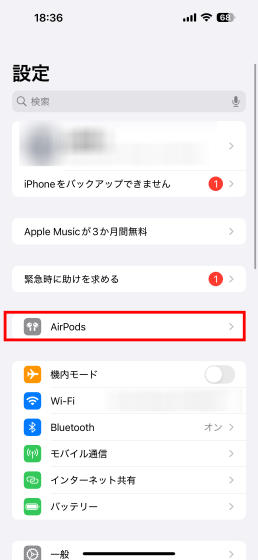
AirPods 4 has a feature called 'Noise Control.' 'Off' is, as the name suggests, noise control is off, 'External Sound Capture' is a mode in which ambient sound is played from the earphones so that external sounds can be heard well even while wearing the AirPods, and 'Adaptive' is a mode that combines active noise canceling and external sound capture modes into one new mode, which can automatically adjust the noise control level to suit the changing noise conditions of the environment. And 'Noise Canceling' is a mode that enables active noise canceling.

My impressions of the noise canceling feature of noise control are written in the article below.

The 'adaptive' settings are as follows:

The noise reduction rate can be changed depending on the settings for 'Adaptive'. Adjusting to 'Reduce Noise' on the left will reduce the amount of noise you hear. In this state, when I was in a quiet office, I got the impression that 'it doesn't feel as quiet as when noise canceling is turned on, but the noise is reduced to a moderate degree.' When I went to a noisier place, the amount of noise was reduced even further, and I felt the same quietness as when noise canceling was turned on.

By default, 'Adaptive Audio' and 'Noise Cancelling' will not work unless you have both earphones in your ears, but you can open 'Accessibility' from the AirPods settings screen and turn on 'Noise Cancelling with Only One AirPod Worn' to make them work even when you're only wearing one ear.
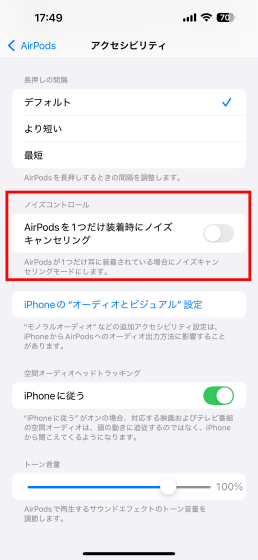
When I had noise canceling turned on, people around me called out to me, and although I could hear them, I found it hard to tell if the voice was directed at me or not.
Playback control can be done by touching the depression on the stem of the AirPods 4. When you press this area firmly with two fingers, a small, light 'click' sound is heard. The stem does not physically dent, but it is a sound that gives the illusion of being dented. Press once to play/pause/answer/mute a call, press twice to go to the next song/end a call, and press three times to go to the previous song. Volume control is not possible. Also, music automatically stops when you remove the AirPods 4 from your ears, and resumes when you put them back on.

From the setting item 'Operation when AirPods are long pressed', you can change the noise control setting when long pressed, and you can also use it as a Siri activation switch instead of noise control. Since you can switch noise controls with a check mark by long pressing the stem, you need to select the noise control you want to use in advance. When the noise control is switched, a sound effect is played, so it's easy to understand.

The only thing that bothered me a little when playing audio was that the AirPods 4 themselves got warm. After a few minutes of playback, I felt a slight warmth, which wasn't so bad that I would call it hot, but it felt strange. I got used to it after wearing them for a while.
When I tried talking to someone with 'conversation detection' turned on, the noise canceling seemed to weaken after the second word I started speaking. However, you have to speak clearly; muttering to yourself won't count as conversation.

Next, I tried out the 'facial gestures' feature, which allows you to answer calls and control notifications by shaking your head up, down, left and right.

With the default settings, the iPhone wouldn't respond no matter how much I shook my head, but after changing a certain setting, it started working properly.

The settings are as follows: Go to 'Settings' app, then 'Apps' and 'Phone', then tap 'Announce incoming calls with voice'.
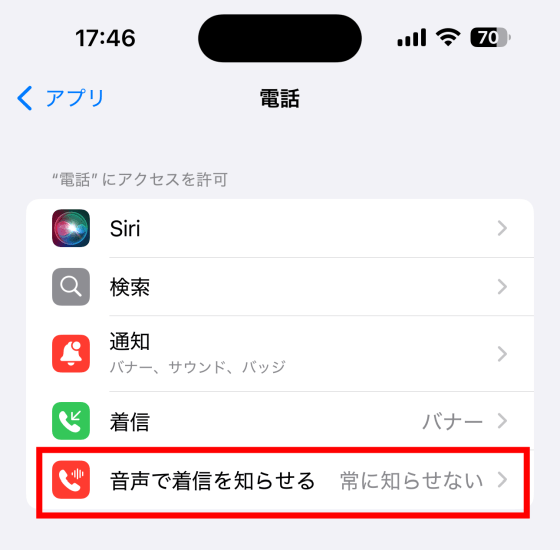
Now, when you receive a call, you will hear a voice saying 'You have received a call from (phone number). Would you like to reject the call or answer it?', and you can answer or reject the call by shaking your head up or down after hearing the voice.
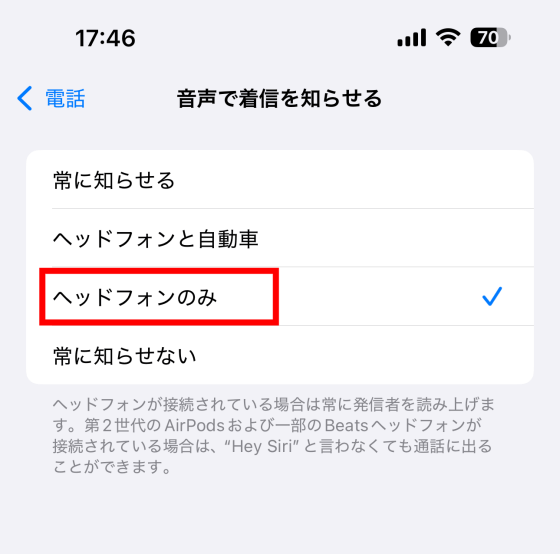
As for notifications, you can stop notifications from being automatically read out by shaking your head, or you can launch Siri and say something like 'I want to send to notifications,' then shake your head when prompted 'Do you want to send?' to send the message.
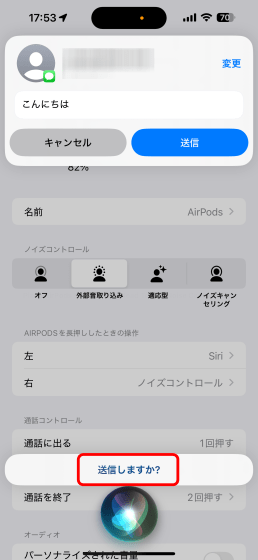
Next, we measured the battery life. This time, we turned on all the configurable items such as 'Personalized Volume', 'Conversation Detection', 'Adaptive Audio', and 'Personalized Spatial Audio', as well as noise cancellation. We set the volume to the volume that was raised twice from 0, and played a random radio program on Apple Music on the iPhone. We kept the play/pause operation to a minimum.
We started measuring from 100% and recorded the remaining battery level approximately every hour.

The battery of the left AirPod ran out 4 hours and 47 minutes after the measurement started. At this time, the battery level of the AirPods on the iPhone was displayed as '2% remaining.' The noise canceling, which was set to not work unless the headphones were worn in both ears, was forcibly turned off at this point. The right ear endured for about 8 minutes and continued to play music, but the battery ran out completely 4 hours and 55 minutes after the measurement started.

According to Apple's specifications
Next, we measured the time it took to charge from 0% battery. We put the AirPods 4 in a case with 100% battery remaining and measured every 30 minutes without connecting it to a cable. The results are shown below, and it took about 1 hour and 30 minutes to fully charge the case. The charge level of the case dropped from 100% to 78%. When we left it in this state for 24 hours and checked the charge level of the case, it had dropped by 5%.

Related Posts:






